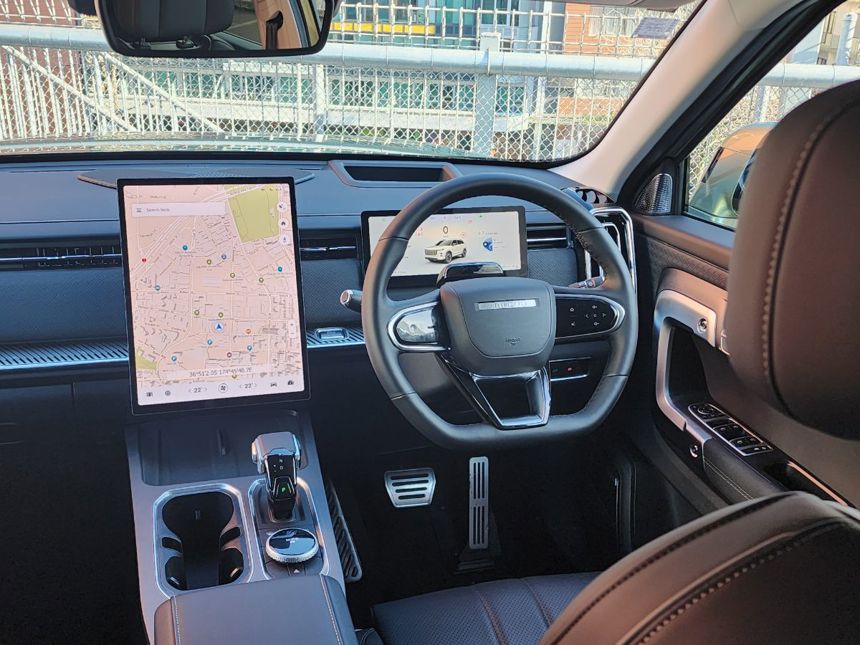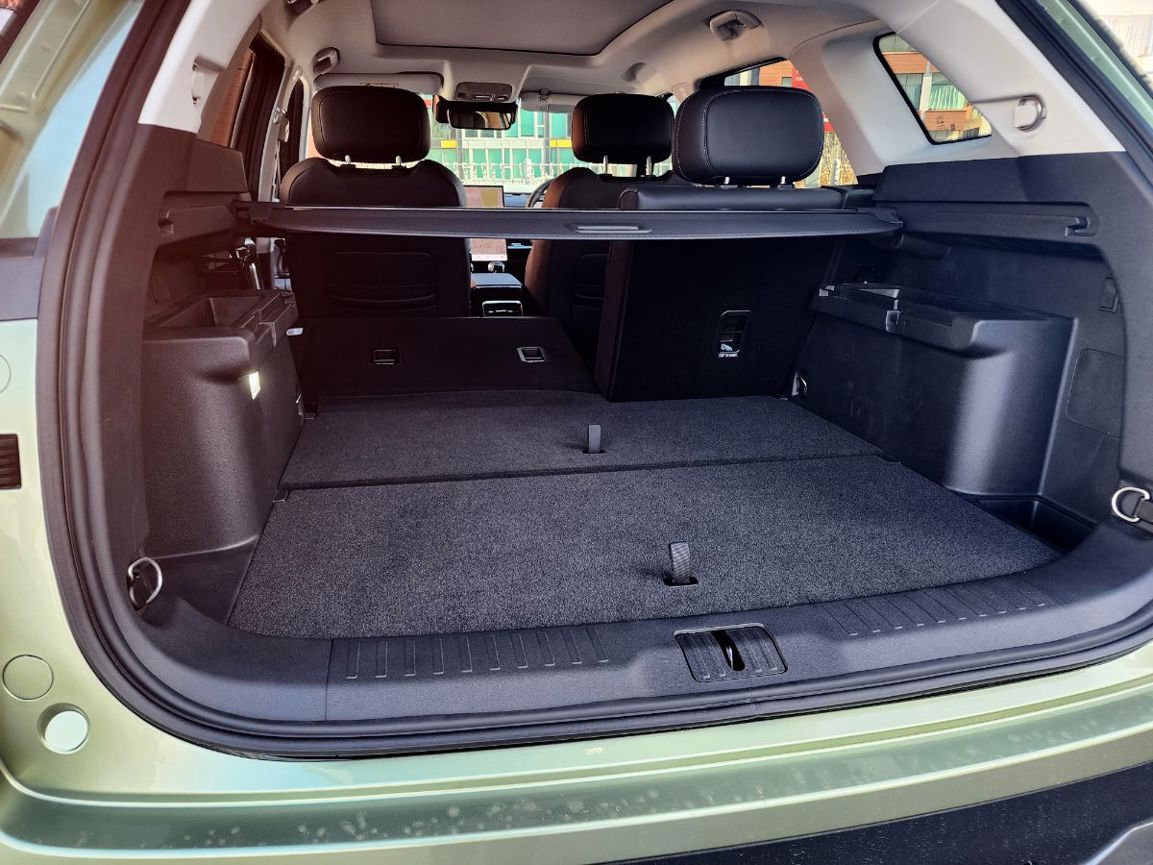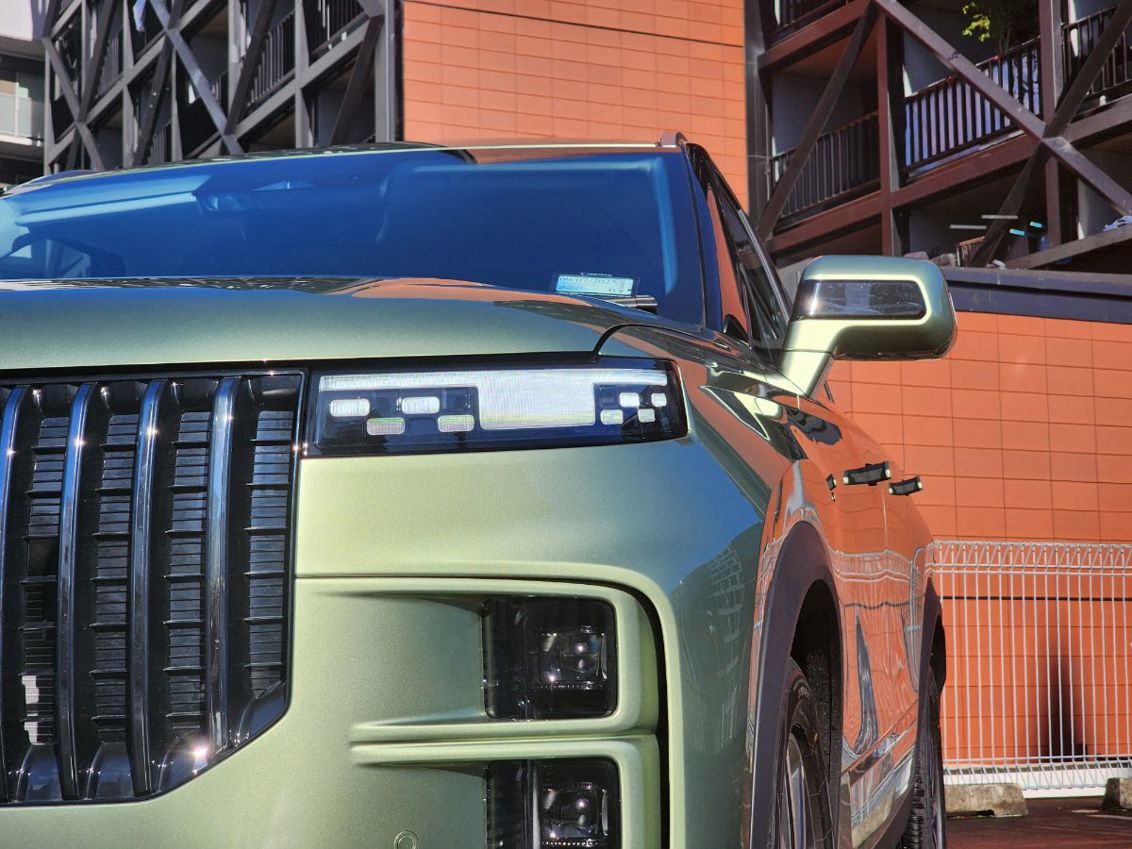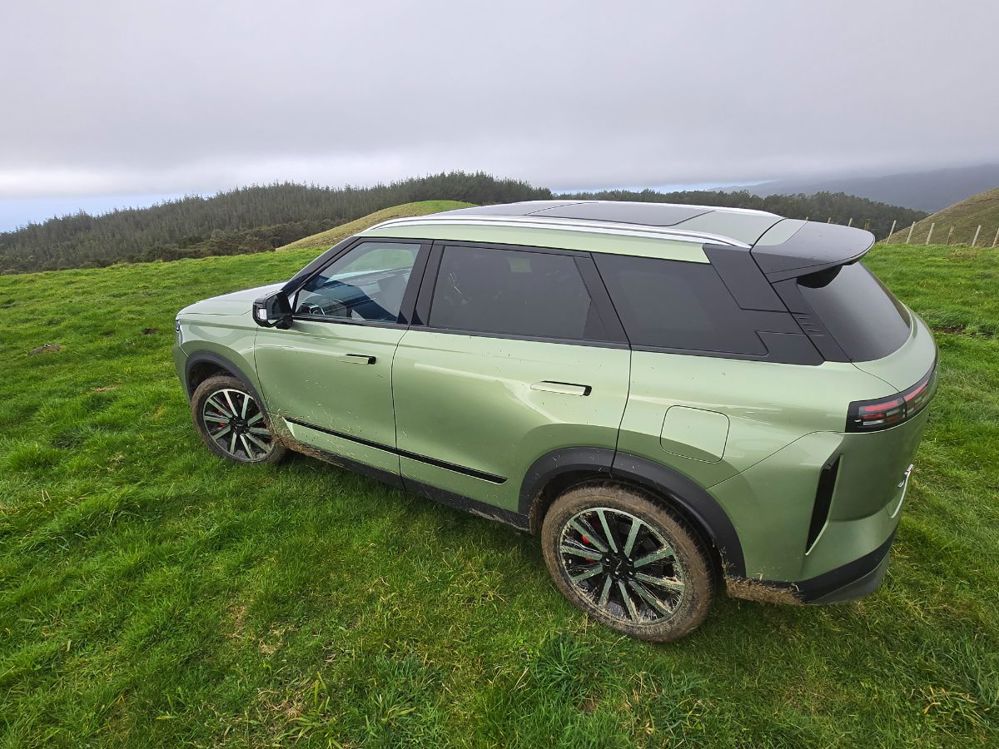Jaecoo is a sister brand to Kiwi newcomer Omoda: but while the O-division does futuristic-looking crossovers, Jaecoo errs towards more traditionally chunky SUV styling; all on shared platforms, of course.

JAECOO J7: Engine 1.6-litre turbo-petrol Power 137kW/275Nm Gearbox: 7-speed automated dual-clutch, FWD or AWD Consumption 7.8l/100km (3P-WLTP) Price $37,990-$43,990.
The Jaecoo J7 is a compact SUV on a road-car base that also claims to have pretty decent off-tarmac credentials, with multiple AWD drive modes and generous 200mm ground clearance. Apart from the look, that’s what makes a Jaecoo J7 different to an Omoda C5; think of it as China’s Suzuki Vitara/S Cross, or Subaru Crosstrek.
It’s actually a similar size to the Subaru but looks more substantial, thanks partly to some pretty overt Land Rover styling cues. Not that there’s anything wrong with that (this time), because Jaecoo parent company Chery has had a joint venture with Jaguar Land Rover in China for a decade now. That might be the difference between respectful homage and ripoff.
The J7 comes in both 2WD and AWD versions, but both get the same 1.6-litre turbo-petrol engine. That means the basic powertrain and platform are pretty much the same as the Omoda C5 AWD. The launch pricing of $37,900 (EX 2WD) and $43,990 (AWD) lines up nicely with that Vitara/Crosstrek competitor set; those are introductory prices valid until the end of September.

If you like what you see, then you’ll like it more on the inside. The J7 is full of chunky shapes and yes, even more Land Rover-inspired design details, right down to the steering wheel shape and sliver of branding across the boss.
There are loads of interesting textures and it’s all quite nicely done. The EX+ boasts a big 14.8-inch portrait screen (the EX 2WD has a smaller 13.8in display) that contains most cabin control functions, with hardly a physical control to be seen on the centre console.

That might ordinarily be a bit of a red flag, but the home screen does have some shortcuts along the bottom (Polestar style) and even when phone projection has taken over the display, there’s a climate pushbutton by the gearlever that will bring up the air-con/steering wheel and seat-heating menus straight away.
There are plenty of hard plastics if you look, but the overall impression is of quite a luxurious compact-SUV. The seats in the EX+ are trimmed in faux-leather which looks good but falls a bit on the icky side to touch; the front chairs could do with a bit more lateral support for longer drives, but overall the elevated driving position and minimalist style make this a nice place to be. Love the Tesla-style phone charging tray with built-in cooling vent, too.

The versatile 410-litre cargo area deserves a mention. The split/fold back seats fold properly flat, which is an increasingly rare feature for mainstream SUVs. There’s also a hands-free tailgate opening feature.
We’re not so keen on the claustrophobic view out the rearvision mirror; the EX+ has a special adaptive/anti-glare mirror which makes the rear window look letterbox-sized and about three car lengths away. Lucky the comprehensive 360-degree camera system is so good (it even gives an outside view of the car at intersections).

Welcome lights and completely automatic unlock/lock (just approach or walk away with the keys in your pocket and the car does the rest) are nice, premium-feeling touches.
Jaecoo J7 EX+ on the road
The 1.6-litre engine is smooth and so is the dual-clutch transmission - at least when the J7 gets up and running. But the engine is a little gruff at low speed and the gearbox is hesitant when taking off from a standstill or on a middling throttle. More Ford Powershift (too soon?) than Volkswagen DSG.

The suspension is also jittery at urban speeds and even on the motorway at up to 80km/h, which is an odd characteristic for a compact-SUV: it gets better the faster you go. The EX+ gets 19-inch wheels; it’s likely the EX’s 18in rims provide a slightly less abrupt response to minor bumps.
At open-road speeds it flows much naturally and while it’s not what you’d call sporting, it tracks around tricky corners well and the AWD is well-suited to on-road driving.

The safety stuff is comprehensive and… not too annoying. The NZ-spec Omoda C5 has already undergone a tweak to its driver assists since our preview drive earlier this year; no doubt the Jaecoo benefits from the same work.
The adaptive cruise works really well, although it pays to opt out of the steering assist: it tends to take little bites all the time to keep you on track, rather than smoothly plotting a course.

The J7 is obviously proud of its multiple drive modes: switch between them on the rotary controller and unique graphics fill the infotainment screen for each. Complete with a voice confirmation and slightly unsettling diction: "Sport MODE!".
The differences between the on-road modes (Eco, Standard, Sport) are negligible, as it often the case with mainstream cars. But it's the list of off-tarmac settings (Snow, Mud, Sand) that hint at something a bit more.
Jaecoo J7 EX+ off-tarmac
We free-ranged with the J7 EX+ for a week on-road, but we also joined in on a brief off-tarmac launch-event drive with Jaecoo NZ, which was very keen to show off the vehicle's abilities in the slippery stuff.

Nobody's claiming the J7 is a hard-core 4x4: it's still a crossover SUV, on road-car suspension with road-car tyres and a single-range transmission.
So we didn't venture too far off the beaten track: at least nothing to really challenge the Jaecoo's 21/29deg approach/departure angles or 600mm wading depth.

But a hour-plus run up some farmland near Clevedon after an incredibly wet few days did have the 200mm ground clearance earning its keep.
And on one steep and very slippery uphill section some operator error (yes, yes, it was me) had us slipping sideways into a deep rut, the J7 eventually slithering to a halt as we totally lost traction. Game over. Except that with the throttle still buried, the powertrain paused for a moment, gathered its thoughts and powered on. Genuinely surprised/impressed.

That was in the generic Off Road mode, too; there are more specialised Sand and Mud settings to choose from, either of which would have been even more effective at keeping us going.































